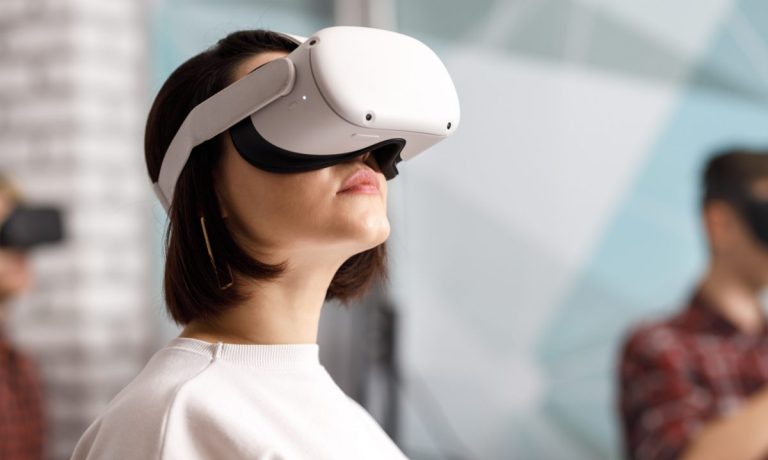
On Oct. 28, a year will have passed since Mark Zuckerberg’s world-shaking announcement that his company would henceforth be called Meta, writing in a founder’s letter: “Our hope is that within the next decade, the metaverse will reach a billion people, host hundreds of billions of dollars of digital commerce, and support jobs for millions of creators and developers.”
Hope springs eternal, as the saying goes, and hope is what Meta mostly has going for it as 2022 nears an end and reports of a potential epic fail are hounding the company’s attempts at building a virtual world where people want to spend their time — and their money.
The buzz (not the good kind) is around Meta’s core Horizon Worlds metaverse, which started as an invite-only beta in 2020 and was opened to the public in December 2021. To enter and interact requires the Meta Quest 2 headset, now retailing for $399.
Trouble in virtual paradise was revealed Oct. 15, when The Wall Street Journal (WSJ) published contents of internal documents painting a portrait of a project with little interest to a public that doesn’t seem to understand what a metaverse is — or why pricey hardware is the gateway.
In terms of usership, WSJ reported that “Meta initially set a goal of reaching 500,000 monthly active users for Horizon Worlds by the end of this year, but in recent weeks revised that figure to 280,000. The current tally is less than 200,000, the documents show.”
To summarize criticism of Horizon Worlds, there’s no one to hang out with.
“Most visitors to Horizon generally don’t return to the app after the first month, and the user base has steadily declined since the spring, according to the documents, which include internal memos from employees,” per the report.
It added a comment from an internal Meta document saying, “An empty world is a sad world,” adding that “According to internal statistics, only 9% of worlds built by creators are ever visited by at least 50 people. Most are never visited at all.”
This flies in the face of what makes platforms of any kind attract users and scale.
As PYMNTS Karen Webster commented, “The reason people walk by an empty restaurant and walk into a busy one is the perception that the busy one is better. Two-sided networks have a different challenge — which having built and launched one, Mark Zuckerberg should know. Without both sides on board, there is no platform. It’s Platform Economics 101, and it’s been that way since Istanbul’s Grand Bazaar was founded in 1730.”
See also: Zuckerberg’s Unlovable Metaverse Shares Flaws of Meta’s Payments Policy
This all followed coverage by The Verge, which obtained a Sept. 15 memo from Meta Vice President of Metaverse Vishal Shah, who placed Horizon Worlds in “quality lockdown” for the remainder of 2022 to address technical glitches. But that wasn’t the big reveal in the memo.
The Verge reported that Shah’s memo took Meta staff to task for not using Horizon Worlds very much themselves, saying “For many of us, we don’t spend that much time in Horizon and our dogfooding dashboards show this pretty clearly. Why is that? Why don’t we love the product we’ve built so much that we use it all the time? The simple truth is, if we don’t love it, how can we expect our users to love it?”
Headset or Headache?
Ironically, the headset isn’t helping. Originally retailing for $299, Meta raised the price on 128GB Meta Quest 2 headsets to $399.99 and 256GB versions to $499.99 effective in August. The price hike extends to accessories and refurbished Quest 2 units, as explained in a blog post.
In the first quarter, Meta’s Reality Labs division, which includes virtual reality (VR) headsets, reported revenue of just $695 million, compared to Facebook’s $27 billion in advertising sales. Meanwhile, Reality Labs recorded an operating loss of $2.96 billion.”
That angle got potentially weirder with Meta’s Oct. 11 announcement of the new Meta Quest Pro headset designed for creators and priced at $1,499. Positioned as a “work tool” for VR creators rather than the typical metaverse denizen, it comes with a suite of creator tools, range-of-motion sensors, advanced haptics and more.
Read more: Zuckerberg’s Metaverse Avatar Finds Its Legs (and Headset) at Last
For all PYMNTS crypto coverage, subscribe to the daily Crypto Newsletter.